DMM UNI-T UT123
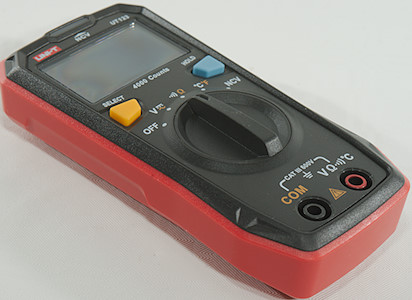
Uni-T has a large selection of DMMs in their program, this model is a compact and fairly simple meter without current ranges.
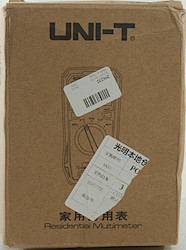

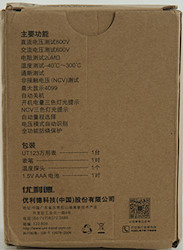

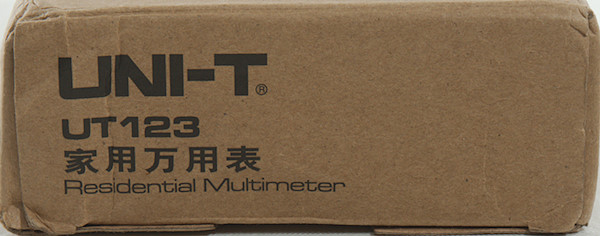
The meter arrived in a red box with Chinese writing.
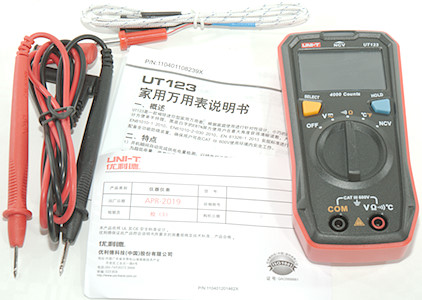
The box contained the meter, a pair of probes, the thermocoupler and a instruction sheet in English.


The probes are rated for 600V and CATIII


The thermocoupler is a standard cheap model with banana plugs.
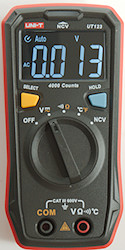
The meter is fairly light weight and must be held with a finger when rotating the range selector.
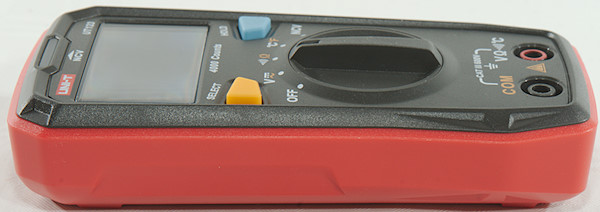
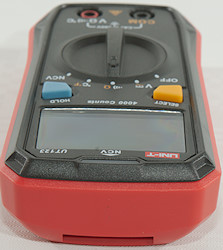
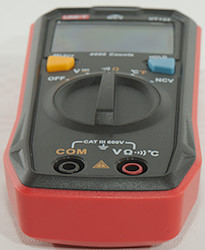
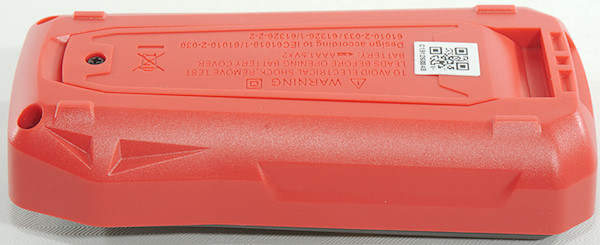
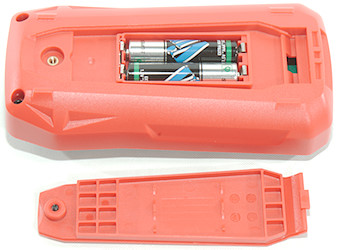
Display
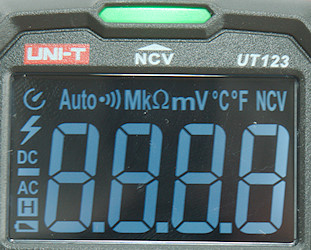
The above picture shows all the segments on the display.
The green/red indicator above the display is used on continuity and NCV mode.
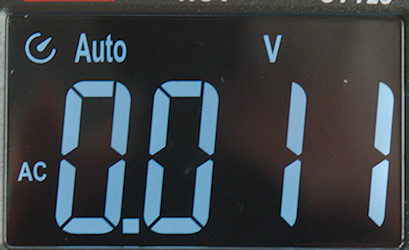
Typical display during usage, it will show the number and what measurement is selected.
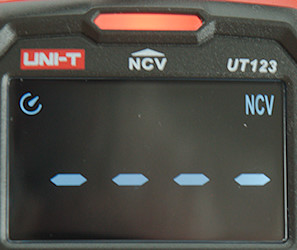
The electric field detection (NCV) has the usual up to 4 bars on the display, it beeps and will also show green or red light (Depending on field strength) on the led above the display.
Functions

Buttons:
- Select (Yellow): Select VAC/VDC (Default is auto), ohm and Fahrenheit.
- Hold: Will freeze the display, press again to release.
Rotary switch:
- Off: Meter is turned off
- V: Show DC and AC voltage, default is automatic selection.
- ohm: Continuity and resistance (Default is continuity).
- °C°F: Temperature in Celsius or fahrenheit
- NCV: Non contact voltage.
Input
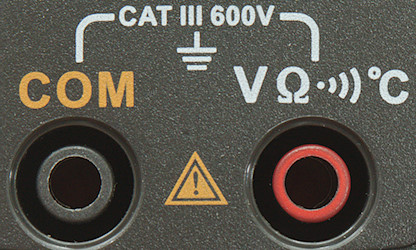
The meter cannot measure current, this means only one pair of inputs is needed.
Measurements
- Volt and frequency
- Meter will automatic change between AC and DC and needs less than 0.01V to do that.
- 1 VAC is 5% down at 2.4kHz
- Voltage range has audible alarm on over voltage.
- Input impedance is 10-11Mohm on DC and AC
- Voltage ranges are rated for 600V DC/AC input.
- Current
- Meter cannot measure current
- Ohm, Continuity, diode and capacitance
- Ohm needs about 2.7s to measure 100ohm
- Ohm is 1.04V open and 0.26mA shorted
- Continuity is fast in speed (About 15ms).
- Continuity beeps when resistance is below 30ohm
- Continuity green led turns on with beep, red led turns on when resistance is below 420ohm
- Continuity is 2.1V open and 0.26mA shorted
- Ranges are rated for 600V DC/AC input.
- Miscellaneous
- Current consumption of meter is 13mA to 14.5mA depending on range.
- Meter works down to 1.9V where it turns backlight off, battery symbol show at 2.5V.
- Backlight is stable until it turns off
- Display reading is stable until backlight turns off
- The meter usual need a couple of display update to reach the final value.
- Viewing angle is good, except from the top.
- Full length shrouded plugs can be fully inserted.
- Display updates a bit faster than 1 times/sec (This is slow).
- Will automatic turn power off in around 15 minutes.
- Due to the display type backlight is always on.
- Weight is 130g without accessories, but with batteries.
- Size is 130 x 65 x 33mm.
- Probes
- Probe resistance 77mOhm for one.
- Probe wire is 89cm long.

Tear down
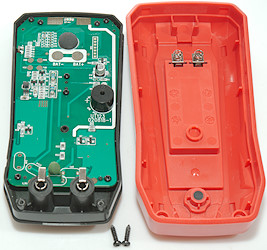
I had to remove two screws to open the meter.
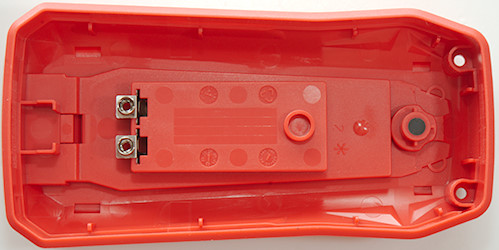
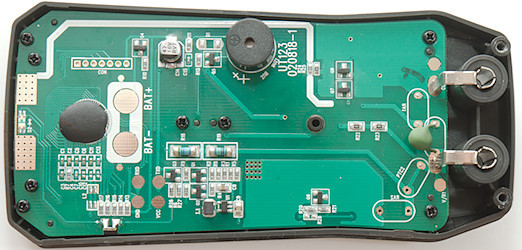
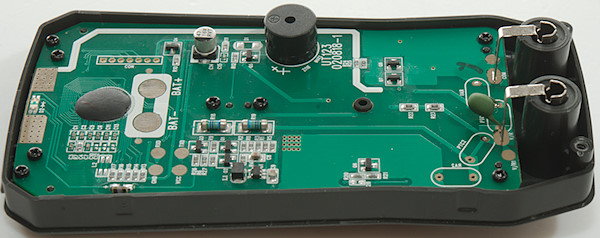
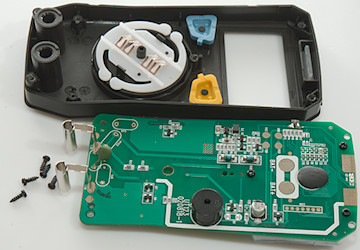
And 5 screws to get the circuit board out.
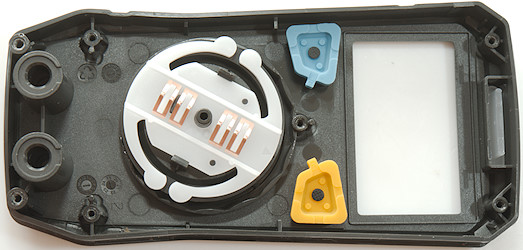
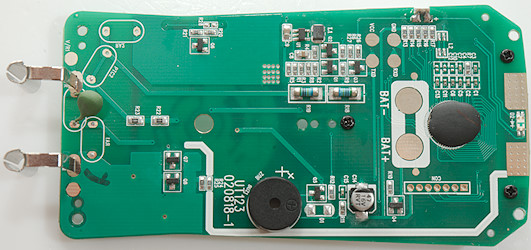
The voltage input has the usual 3 paths, on through 10Mohm (R18 & R19: 2x5Mohm), on through 1Mohm (R22 & R23: 2x499kOhm) and on through a PTC (PTC1) with a transistor pair (Q7 & Q8) for protection in ohm and temperature modes. The backlight is soldered to the circuit board on this side.
At the top of the circuit board is the NCV detection antenna and a dual color led (D2) that light through a hole in the circuit board.

This circuit must be a boost converter for the backlight.

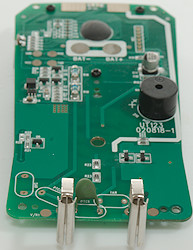
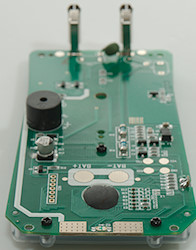
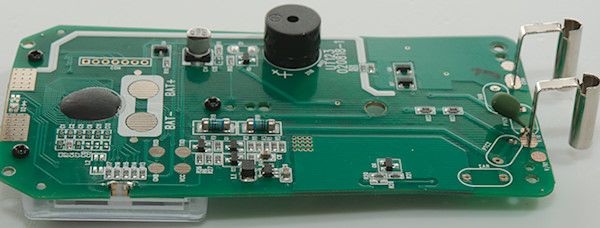
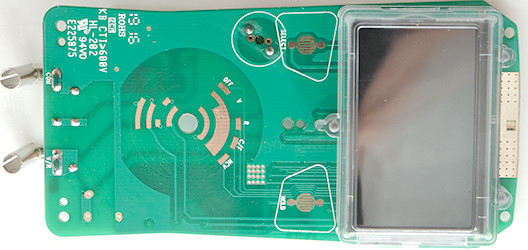
This side only has a connections for the range switch, the buttons and the LCD.
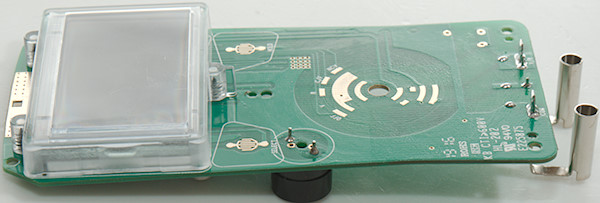
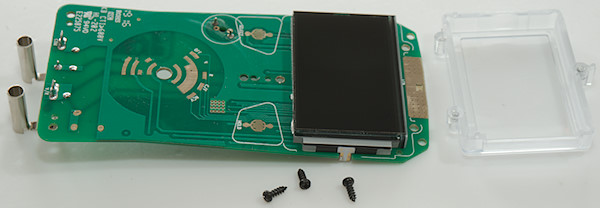
I could remove the LCD cover by removing 3 screws, but the backlight is soldered to the circuit board.
Conclusion
As usual I doubt the CAT rating, this meter do not have any doubtful fuses, but the inputs have two SMD resistors in series and a single PTC, this will probably handle normal mains voltage fine, but a CAT III transients is doubtful.
The meter works fine and the dual level continuity is a nice detail. The number of ranges/functions is fairly low, but is enough for some applications.
Notes
How do I review a DMM
More DMM reviews
Multimeter design, this explains a lot more about DMM's than my tear-downs





































